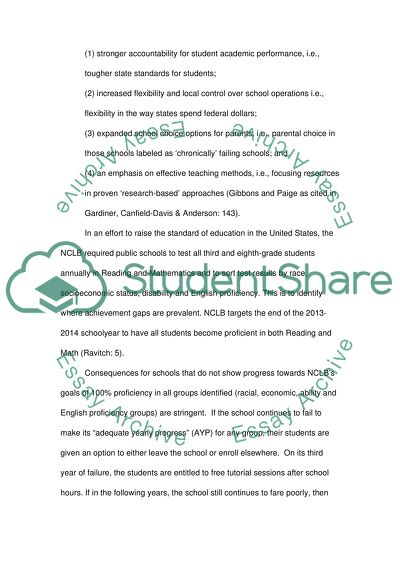Cite this document
(“No Child Left Behind Research Paper Example | Topics and Well Written Essays - 2250 words”, n.d.)
Retrieved from https://studentshare.org/education/1438125-no-child-left-behind
Retrieved from https://studentshare.org/education/1438125-no-child-left-behind
(No Child Left Behind Research Paper Example | Topics and Well Written Essays - 2250 Words)
https://studentshare.org/education/1438125-no-child-left-behind.
https://studentshare.org/education/1438125-no-child-left-behind.
“No Child Left Behind Research Paper Example | Topics and Well Written Essays - 2250 Words”, n.d. https://studentshare.org/education/1438125-no-child-left-behind.


